
Spoiler Warning: There are spoilers ahead for Star Trek: Picard Seasons 1-3. Spoilers are also present for The Next Generation and Voyager.
Before I’d even watched a single second of Star Trek: Picard Season 3, I was sceptical. In both Seasons 1 and 2, incredible premiere episodes gave way to stories that either failed to pull out a decent ending… or just failed across the board. Regardless of how The Next Generation landed, it’s the first chapter of a season-long story where success or failure will ultimately be determined over the next nine weeks. Having been burned by Picard twice now, I’m afraid that I begin this new season feeling more than a little jaded.
Taking the episode on its own merit, however, The Next Generation feels like a solid start. I wouldn’t say it was perfect – it’s an episode of contradictions, where a couple of story beats seemed to rush past in a heartbeat whilst its contribution to the overall narrative of the season may turn out to be too slow. But there were points of high excitement, fun little character moments, and more than enough intrigue spread across two distinct – yet surely connected – narrative threads to drive things forward and keep me engaged.
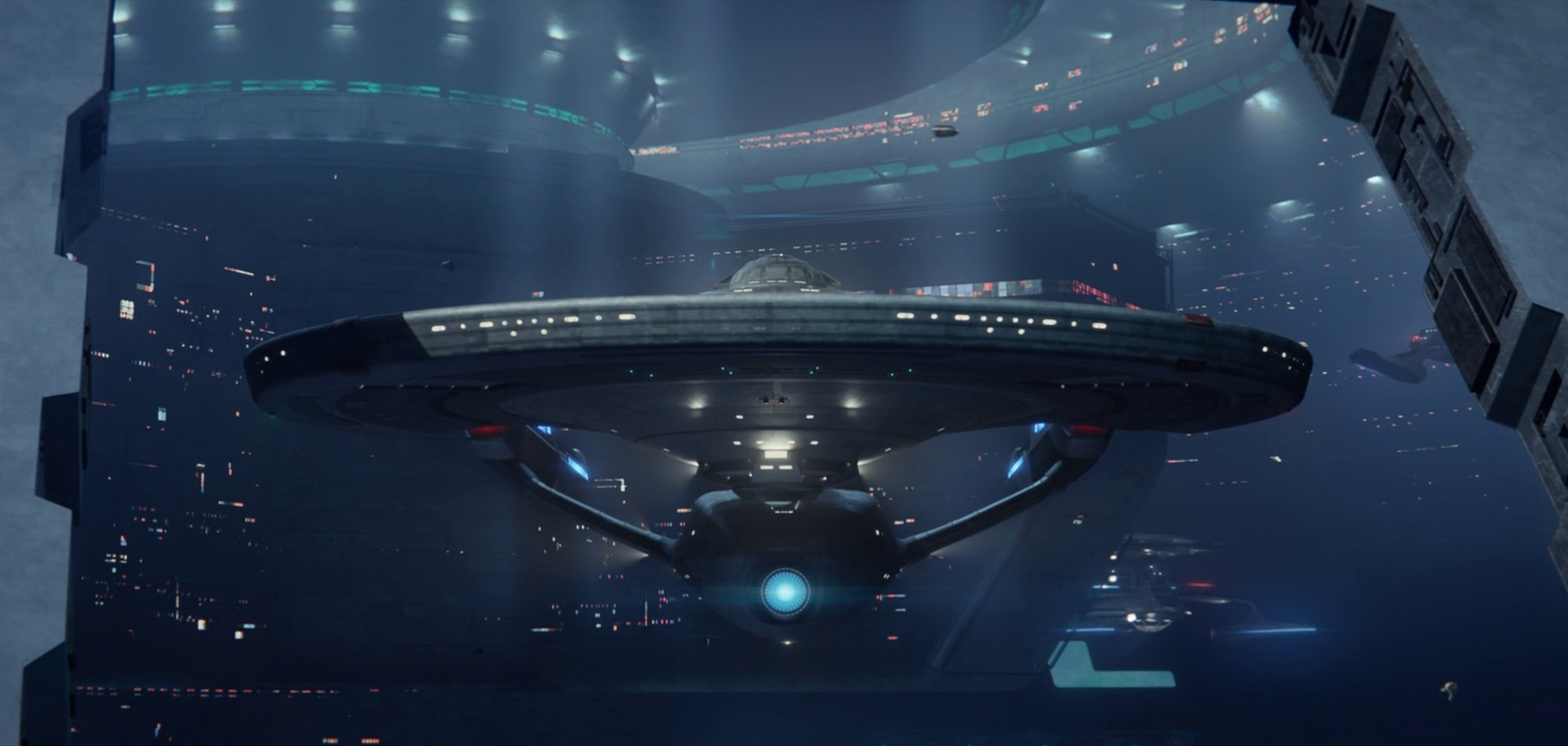
I said as Season 2 came to a close that I was bitterly disappointed to see most of the main cast being jettisoned in order to bring back characters from The Next Generation, and how I hoped their absences would be addressed somehow. Perhaps the most important of these characters was Laris, who, despite making only a handful of appearances across Seasons 1 and 2, was absolutely essential to last season’s story. Although we didn’t get to spend a great deal of time looking at Picard’s new relationship with her, I was pleased that Laris was able to be included and that we got to spend a little time with her before the main story took over.
I said in Season 1 that Laris and Zhaban served a similar role in the story to the residents of Hobbiton in The Lord of the Rings – being the familiar and comforting faces of home that Picard had to leave behind as he set out on his adventure. And Laris once again seems to serve a similar function in Season 3 as Picard sets off on a new quest. It was great to welcome back Orla Brady, and to catch a glimpse of Picard’s newfound home life with Laris before the main story kicked off. I’m glad there was time to include those sequences – and it gives me hope that we might get to hear something of Elnor, Soji, and the Borg Queen-Dr Jurati hybrid as well.
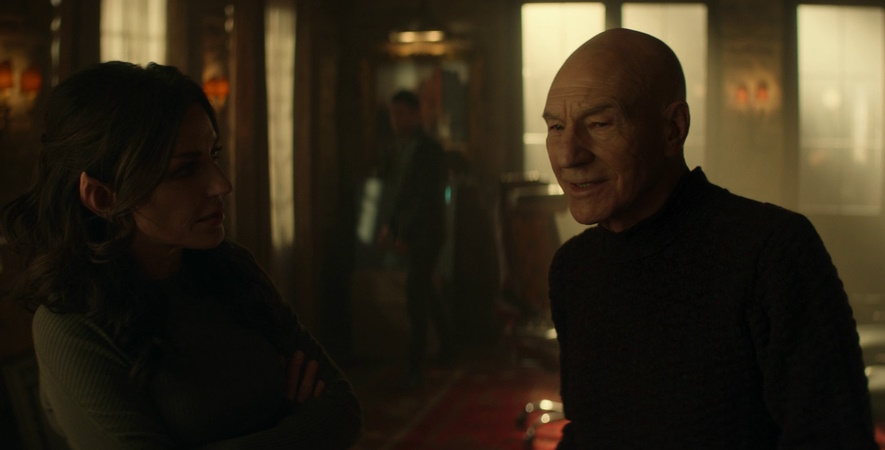
One of the biggest problems that has tripped up Star Trek: Picard in both of its seasons so far has been pacing. This is something that we won’t be able to judge fairly until we’ve seen most of the rest of the season, but there are causes for concern at this early stage – at least in my opinion. The Next Generation introduced us to some kind of mysterious threat that seems to be hunting Dr Crusher… but after setting up that she was in danger, the main story arc of the season didn’t really progress beyond that. Picard and Riker arrived at her ship, the Eleos, but there wasn’t any time left to go into detail about who might be hunting her or what they want.
And that could be okay… if the rest of the season has time to explain all of these points and tie together the different character arcs and narrative threads. But it’s also worth noting that The Next Generation didn’t bolt out of the gate. We met several new characters, but not the villain hunting Dr Crusher, and the episode ended more or less in the same place as it began: with Dr Crusher having fended off an attack, and the help she had called for – Riker and Picard – having only just arrived. In both Seasons 1 and 2, pacing issues across much of the season meant that too much story was left on the table, with whole storylines and characters literally ignored and dumped as time ran out. I sincerely hope that this problem hasn’t been repeated, and that The Next Generation hasn’t set up the season for a disappointingly familiar end.
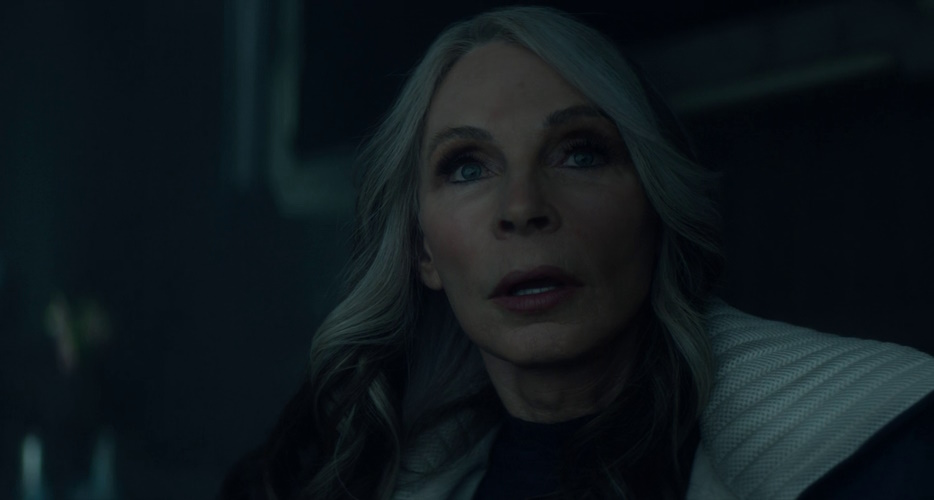
Conversely, parts of The Next Generation seemed to race through – or rush past – potentially-interesting story beats. There were quite a few different elements crammed in to kick off storylines and character arcs, and the result was that not all of them seemed to get enough time in the spotlight – even though the episode as a whole wasn’t in a horrible rush.
It’s a contradiction! Raffi’s story in the criminal underworld was a bit of a whirlwind, taking her from off-the-wagon junkie to undercover operative in a heartbeat, and then culminating mere moments later in her failure (or what she will undoubtedly see as her failure) to stop an attack against a Federation facility. This storyline didn’t necessarily need more time, but it certainly could have had longer to play out. In past iterations of Star Trek, a story like this could have been an episode (or even a two-parter) in itself; Picard’s own undercover mission in Gambit comes to mind!
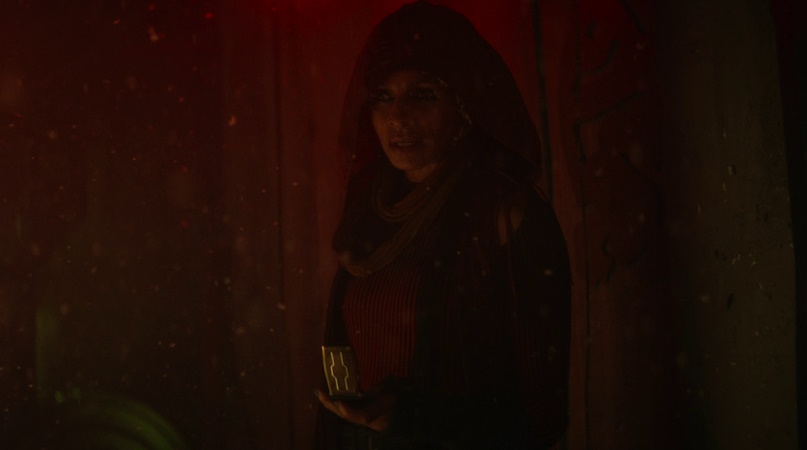
I would have liked to have spent more time with Raffi. Although she and her nameless “handler” made mention of stolen weapons, I didn’t really feel that The Next Generation properly conveyed the stakes. It was only when the Federation facility was destroyed (a moment that had been shown in pre-season trailers) that the extent of the threat that Raffi was staring down became apparent – and by then this part of the episode was pretty much over.
If this storyline had a few more minutes dedicated to it, we could have had a bit more of a conversation about what this missing weapon was, why it was so dangerous, how long it had been since it was stolen… and more background that could have set up the attack on the base. As it is, it’s hard to get too invested in this story. We never saw the base, nor met anyone who might’ve been stationed there, and we don’t know if the weapon used to destroy it was the only one stolen or one of many. Without more information to put these points into some kind of context… it just feels a tad rushed.
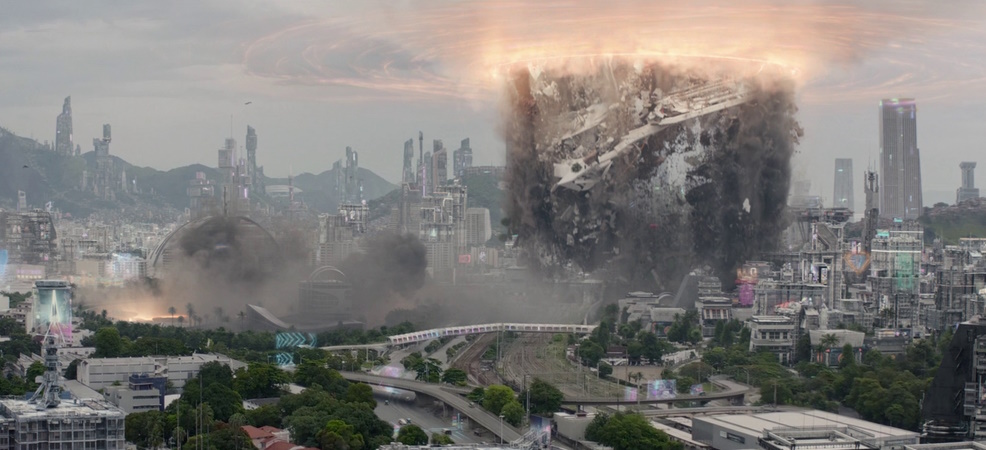
That being said, Michelle Hurd did everything she could with the material she had and the limited screen time afforded her to really sell this storyline, and her emotional performance was deeply impressive. Given that she was working on her own for practically the entire time, it wasn’t an easy challenge to really sell the idea of Raffi being in this dark place, but Hurd rose to the occasion.
In terms of visual effects, The Next Generation had a couple of unspectacular moments. Generally, the quality of the animation work was high – and far better than the lacklustre visuals we saw in parts of Season 1. But there were a few moments with the USS Titan that I felt were just a bit “last-gen” and not quite up to modern standards, especially when we look at what other sci-fi series and franchises are doing.

This is a consequence of Paramount and Star Trek not having the budget or resources that the likes of Disney and Star Wars do, and that’s okay. In a season in which a big return to space is clearly on the agenda, though, it’s at least noteworthy that not all of the CGI moments in The Next Generation stuck the landing.
At first I couldn’t quite figure out what it was about a couple of shots of the USS Titan that I didn’t like, but I think I’ve finally nailed it down. In short, the ship is in the “uncanny valley,” looking real, but not quite real enough. Between the “lens” and the “model” there was just a bit too much smoothness; panels and lines don’t have the textural variation we’d expect to see on a real object. This problem plagued CGI through the 2000s, and if you look at Enterprise or the Star Wars prequels you’ll see far more extreme examples. While it wasn’t terrible, it was noticeable enough to pull me out of the immersion on more than one occasion – and to leave me lamenting the loss of physical starship models!

Aside from the heavy-handed nostalgia play, I’m genuinely not sure what the title of this episode was supposed to be about. The characters who were in focus for the vast, vast majority of the time were very decidedly not the titular “next generation,” and those who arguably might be – Sidney La Forge and the character who identified himself as Dr Crusher’s son – were only on screen for a couple of minutes at the most.
This isn’t a big deal really, but when the title of the episode clearly indicates the same kind of passing of the torch that we got back in 1987, we didn’t really feel any of that as the story unfolded. Perhaps someone cleverer than I am might be able to pick up on what the writers and producers were going for here, but I’m struggling to see it!
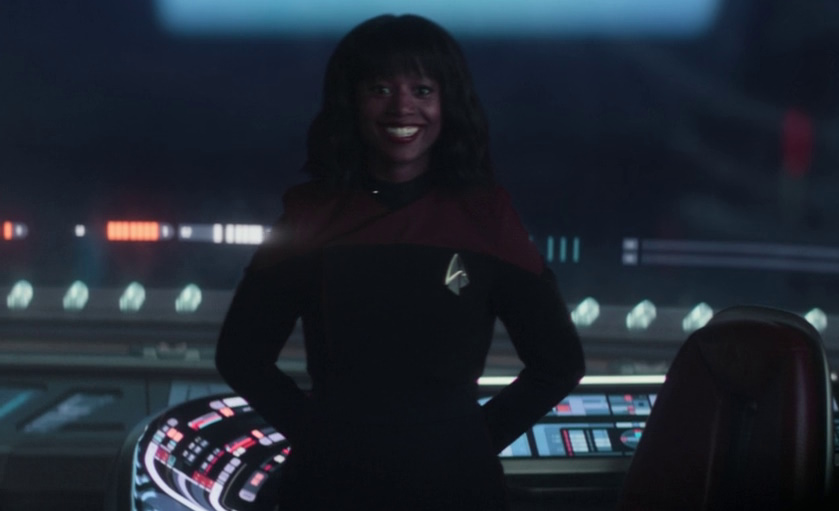
A few points that The Next Generation glossed over could’ve used some additional clarification. The last time we saw Admiral Picard he’d just taken up a new role as Chancellor of Starfleet Academy, and the pin/combadge he wore during this episode was the same one we saw him wearing on the bridge of the Stargazer in Season 2. Yet Captain Shaw made the point that Picard had now retired from Starfleet – and used that to deny his request to change course. So did Picard cease to be Chancellor of the Academy in between Seasons 2 and 3? I guess he must’ve – perhaps while deciding to move to a new planet with Laris – but it wasn’t clear.
If he did retire, how was Captain Shaw convinced to allow him and Riker to “inspect” the Titan? Captain Shaw clearly didn’t want the two of them to be there, and wouldn’t have voluntarily allowed them on board, so the question of exactly what status a retired ex-Admiral and ex-Captain occupy is a bit up in the air. The episode seemed to want to have it both ways: to tell the story of the retired old guard, but also make sure they had a pathway to commandeering a starship.

Captain Shaw is a great character – though I’m still convinced he won’t last very long, one way or another! I noted influences from the likes of Captain Stiles from The Search for Spock and Edward Jellico from Chain of Command, as well as perhaps a dash of Discovery’s Gabriel Lorca, in his characterisation. The strict, rigid, no-nonsense approach that we’ve often seen other characters come up against was on full display, and where Captain Shaw could have come across as a bit of a wet blanket – an unnecessary bump in the road as our protagonists set out on their journey – I think it worked well in context. Starfleet is bound to be populated by career officers like Shaw, and while he comes across as unsympathetic and even malicious due to his treatment of Seven, Riker, and Picard… in a way he isn’t wrong. These two were trying to take his ship and crew on an unsanctioned, dangerous, clandestine mission, and he was right to be suspicious of them and call them out on it.
In terms of the narrative of this first chapter of the story, though, I can’t help but wonder whether it might’ve been better for Picard and/or Riker to have called in a different favour! Instead of sneaking aboard the Titan and trying to secretively reroute the ship, couldn’t they have called in a favour from someone else in Starfleet – someone who could have hooked them up with a ship, or at least gotten them a spot aboard a ship with a captain who likes and respects them? I know that Dr Crusher warned them not to involve Starfleet – but they did anyway, and so I guess my question is: was this their only option? Maybe that’s a bit of a nitpick… and if I’m wrong and Captain Shaw sticks around, perhaps he’ll have a contribution to make to the story that will be more than worthwhile. Time will tell!

So let’s talk about Dr Crusher’s son. As of the last time we saw her, Dr Crusher only had one son: Wesley. And as we saw at the end of Season 2, he’s off doing his own thing with the Travellers and Supervisors. So who is this new character really – and if he is Dr Crusher’s son, will we learn who his father might be?
The obvious connection – especially in a show called Star Trek: Picard – is that he’s Picard’s son, and especially considering that Laris mentioned earlier in the episode that Picard and Dr Crusher had “tried” to become lovers, that could very well play out. We’ll take a look at this in more detail when I update my theory list, but for now suffice to say that this seems to be the most likely outcome.
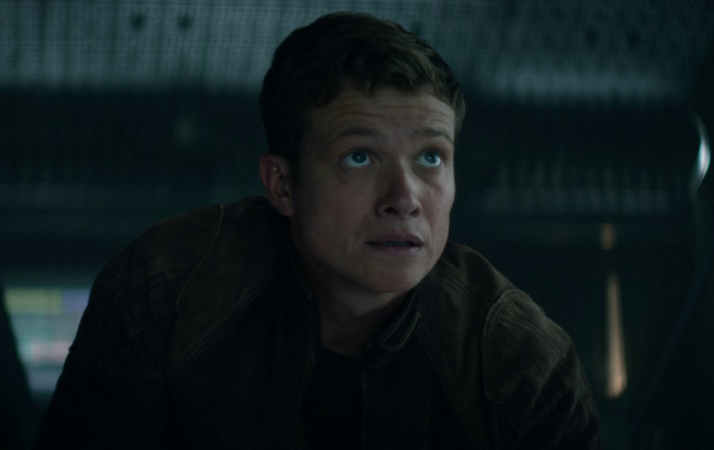
But even if we’ve figured out this character’s parentage, there are still a lot of unanswered questions. Riker and Picard both noted that it’s been about twenty years since they last saw or heard from Dr Crusher… but her son is clearly not twenty years old or younger, so he must’ve been around during the years before she disappeared. That doesn’t mean she would have told her friends about having another child – but it does raise questions. If he’s Picard’s son, and Picard seemed to be in danger, could that explain why Dr Crusher chose to leave her friends behind? Was it all for his sake?
Again, that’s something we can consider in more detail in my theory update. This revelation of Dr Crusher’s colleague being her son raised a lot of questions – but it was also a story point that was blitzed past pretty quickly in The Next Generation. The character emerged, pointing a phaser at Riker, revealed his connection to Dr Crusher, and then it was time for a close-up look at the Shrike before the credits rolled. There was definitely scope to spend a minute or two more on this revelation – both for the sakes of Riker and Picard and for us as the audience. This bombshell didn’t get more than a few seconds in the spotlight before the episode rushed to its next point.

Last season, I argued that an apparent studio-mandated decision to have every single episode end on a cliffhanger was to the story’s detriment, and with The Next Generation ending with not only one but arguably four shocking moments, I feel a tad worried that that trend might continue. In retrospect, Season 2 feels like it was chopped up quite artificially, with a strong focus on these cliffhanger endings to such an extent that it didn’t serve the story, splitting up storylines across multiple episodes unnecessarily. We’ll have to judge this aspect of Season 3 when it’s over, but it’s certainly noteworthy at this early stage that The Next Generation also ended in similar fashion.
Who was the mysterious stranger eavesdropping on Riker and Picard? It seems a safe assumption that he’s some kind of friend or ally of Vadic – the season’s main villain who was teased in pre-season trailers but is yet to make an appearance. He could also be a Starfleet operative, or perhaps someone aligned with Dr Crusher. But it felt like quite a played-out trope to have Riker and Picard meeting up in a bar to have their private chat about secretive and sensitive issues. I know it’s another nitpick – but couldn’t Riker have met up with Picard at the vineyard? If this character’s spying is going to be relevant to the story later on – and surely it will be in some form – it just feels a bit clichéd to have him overhear them speaking in such a public setting.
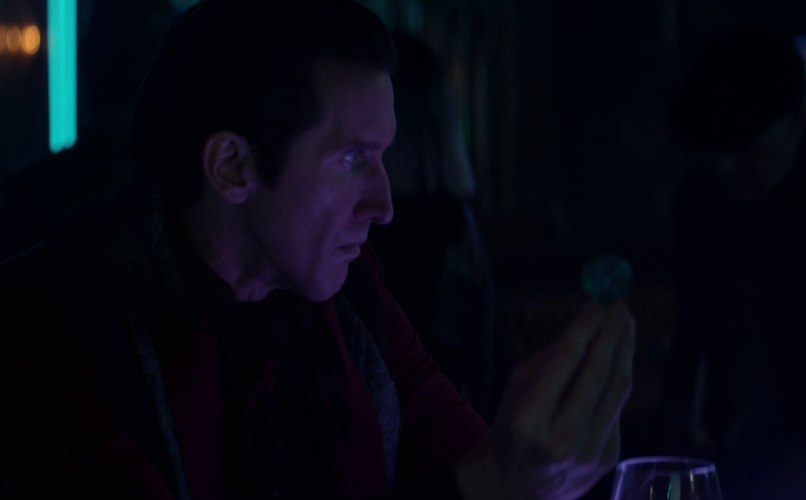
One of the best things Picard did in its first season was re-establish the relationship between Riker and Picard, taking it beyond anything we ever saw in The Next Generation and the films of that era. No longer serving together opened up the possibility of a genuine and deep friendship between the two, and the episode Nepenthe was the perfect way to revisit Picard, Riker, and Troi and establish a new, post-Starfleet dynamic for them.
And The Next Generation picked up that thread from Season 1 and has begun the process of exploring it further. Picard turned to his old friend for help – and with both men being retired or no longer on active duty, there was the opportunity to really examine how well they work together and how close they’ve become. Although Riker and Picard worked well together, and there was trust and mutual respect between them really from the first season of The Next Generation, it’s only in Picard that we’ve seen this friendship genuinely blossom and come into its own. It’s been great to see – and it feels like the perfect and natural evolution of this relationship.
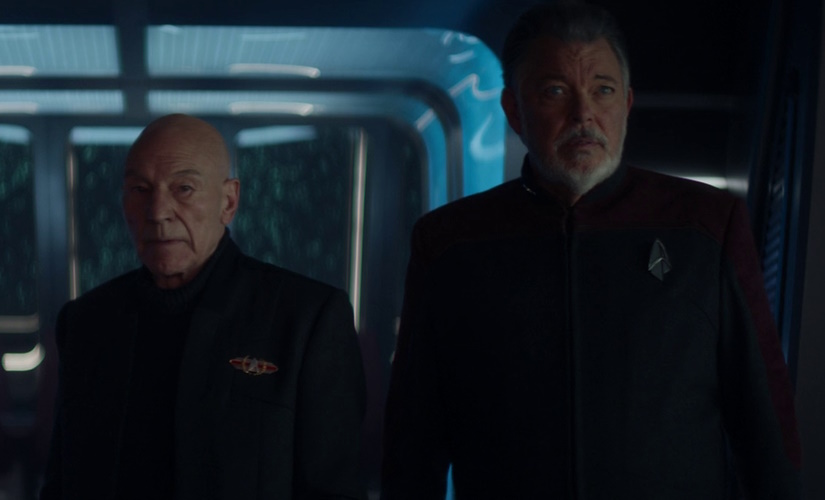
The themes of age and how we treat older people were present in The Next Generation, though perhaps not quite to the extent that I’d been expecting. We got a moment where Picard was unaware of the closure of a starbase and had to be corrected, and a comment from Riker about how both men were past their physical peak, but Riker’s story seems to be teeing up some kind of relationship or family dysfunction angle between himself, Troi, and their daughter Kestra. Jonathan Frakes seemed to suggest in a pre-season interview that Riker has felt unsettled and has been keen on returning to Starfleet, and that could be the source of the tension there.
Having seen Riker and Troi in semi-retirement in Season 1, seemingly doing the best that they could to have a happy family life and provide for their daughter, I hope that this story doesn’t end up coming across as a kind of gratuitous and unnecessary shake-up. I’d have been happy, quite frankly, to have left Troi and Riker behind, with Nepenthe serving as their post-The Next Generation epilogue. With them returning this time, I just hope that if there is to be a relationship dispute, it won’t feel tacked-on or overplayed.
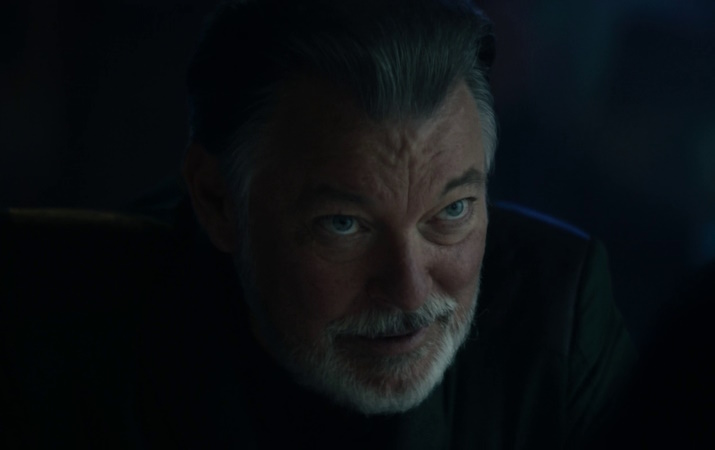
But we’ll have to wait for Troi’s return before we can assess how that particular storyline will land! For now, suffice to say it’s enough to cause a little concern, because undoing or otherwise overwriting what we got in Season 1 would not be my choice – especially if it seems only to be there to inject a sense of drama into an already-dramatic season of television.
I was surprised to see how heavily The Next Generation leaned on visual and musical callbacks to The Original Series films. The Wrath of Khan, The Search for Spock, The Undiscovered Country, and even The Motion Picture were all influential, with everything from fonts to musical motifs being directly lifted from those titles. I said before the season aired that I was getting a kind of “Picard does The Wrath of Khan” vibe from some of the clips we’d seen in trailers, but I wasn’t expecting to see the series lean so heavily on the feature films of the ’80s for inspiration. Don’t get me wrong – as a child of the ’80s, that style of sci-fi is exactly my kind of thing! And it worked well in The Next Generation. I just wasn’t expecting it!

Dr Crusher didn’t always get a lot to do in The Next Generation and the films that followed. She had some episodes in the spotlight, and we saw her take on a commanding role on the bridge in later episodes like Descent and All Good Things, but for the most part her role as the ship’s doctor was a limiting factor. Stories with medical mysteries or where characters had to visit sickbay were where we saw her most often.
With that in mind, where The Next Generation excelled was in ensuring that Dr Crusher stayed true to her characterisation, but took on much more of a leading role in an action-packed storyline. Traits like her courage, that we remember from her earlier appearances, came to the fore in a new way, and this bold direction for her character didn’t feel in any way forced. On the contrary, it felt like the natural evolution for her – especially if she’s been operating independently for such a long time.
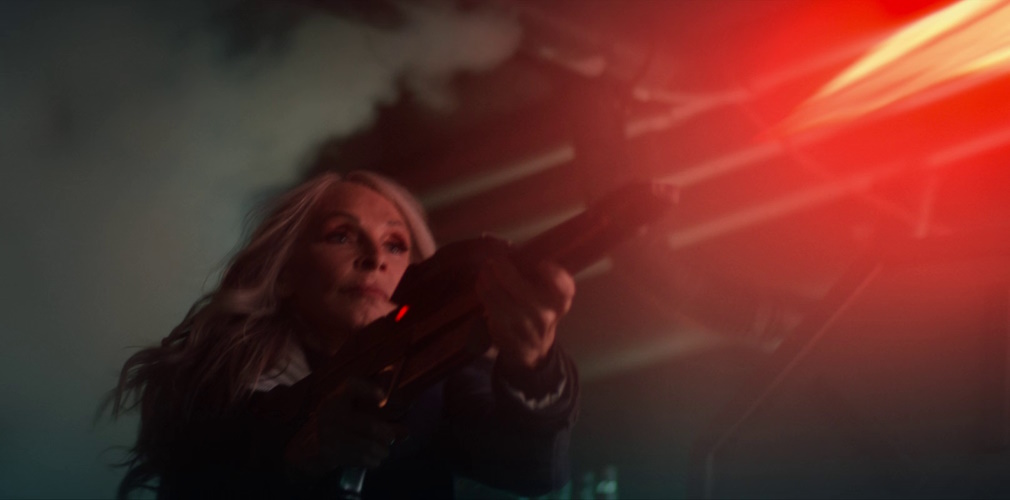
The semi-automated Eleos was an interesting vessel, and I hope we get to spend a little more time with this starship. Dr Crusher and her son seem to rely on the ship’s computer for things like propulsion, where in past iterations of Star Trek we’d have expected to see people operating those stations and departments. But, as Seven reminded Picard aboard the Titan, it seems that Starfleet is embracing more and more automation. An analogy for things happening here in the real world, no doubt!
The “deadnaming” of Seven of Nine by Captain Shaw was something I was uncomfortable about at first, especially after Seven’s arc in Season 2 was all about embracing the Borg side of herself. Captain Shaw clearly has a chip on his shoulder about the Borg, as he made clear in a comment to Picard, so perhaps that’s something we’ll learn more about next time. He might’ve lost someone to the Borg, or even aboard the Artifact.
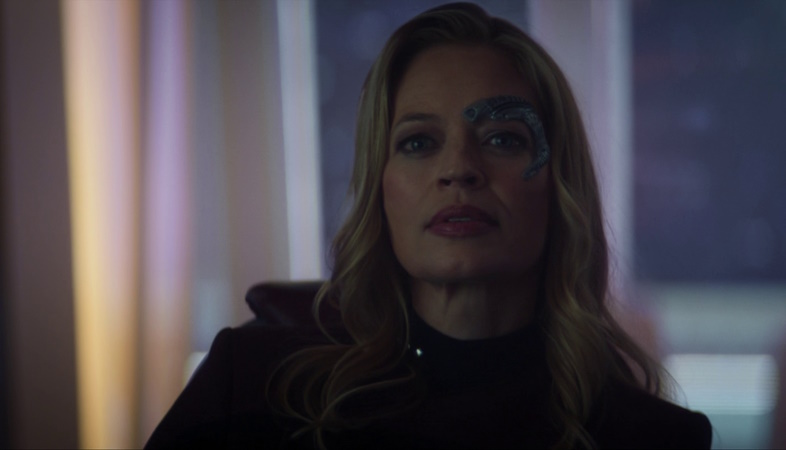
That being said, this kind of deadnaming – forcibly referring to someone by an old name with which they no longer identify – may have been a way of quickly communicating to us as the audience that Captain Shaw is someone we should dislike, and that kind of shorthand can work well in a story with time constraints. But in a broader sense, when we step back and think about Star Trek’s positive, progressive future and how far we’d have expected society to advance by the dawn of the 25th Century… surely something like deadnaming would be socially unacceptable, even for someone in a position of power like Captain Shaw.
In short, I can see why the writers chose to include this aspect of Shaw’s character. Seeing how uncomfortable it made Seven of Nine was a quick and relatively easy way to get across the message that this character isn’t someone we should be rooting for – and I get that. But it has an implication for the Star Trek galaxy as a whole that feels a little uncomfortable. I hope we’ll learn that the rest of the crew of the Titan have more respect for Seven and are willing to treat her better!

So let’s start to wrap things up.
Season 3 is off to a solid start. My scepticism about the pacing of the episode is probably more to do with the muddled and mismanaged first and second seasons and the way those stories ended. I certainly hope that The Next Generation has set up this new story for success, and if nothing else it was nice to spend some more time with Riker and Picard, as well as Dr Crusher, Seven of Nine, and Raffi.
Seeing how these stories will come together is genuinely interesting, and while we could’ve spent a bit more time on Raffi’s side of things, with some more context provided about the stolen weapons and attack on the Federation outpost, it worked well enough. Captain Shaw was the only new character that we got to spend a lot of time with, and while I don’t like him, I can see where he’s coming from and can certainly appreciate that an organisation such as Starfleet must be populated with people just like him. Dr Crusher’s son and Ensign La Forge were on screen so briefly that we didn’t really get a good read on either – but there’s more than enough time in the episodes ahead to rectify that.
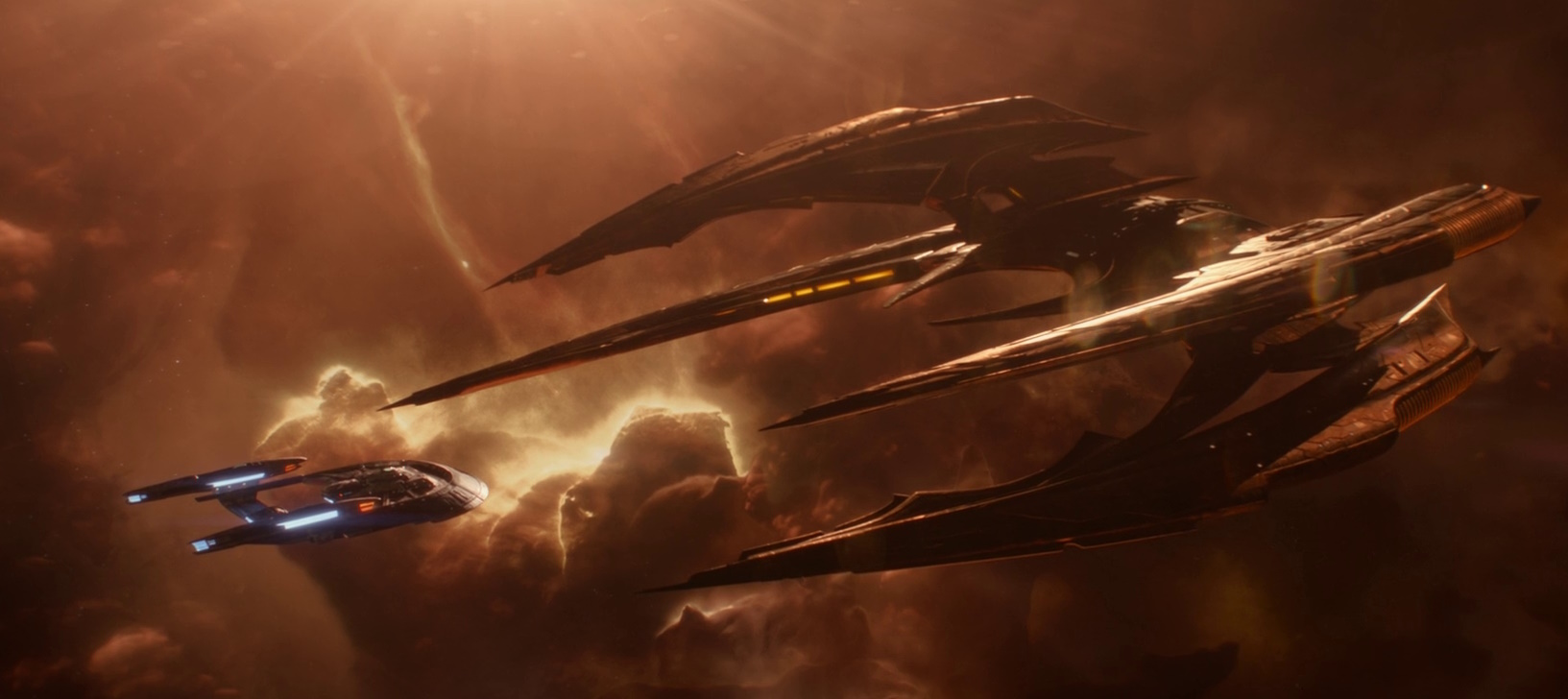
As I said a couple of weeks ago: it’s probably time to watch The Wrath of Khan if you haven’t seen it in a while! That film seems to be serving as inspiration for Season 3 right now, though the story is far from identical.
I had a good time with The Next Generation, taken on its own merit. It wasn’t perfect, and I don’t think it hit the same high notes as Season 1’s Remembrance or Season 2’s The Star Gazer – but if the story that it’s set up has been meticulously planned and will reach a better, more definitive end point than either of the show’s past outings managed, then none of that will ultimately matter. I’m keeping my fingers crossed that that will turn out to be the case.
Star Trek: Picard Seasons 1-3 are available to stream now on Paramount+ in the United States and other countries and territories where the service is available, and on Amazon Prime Video in the UK and around the world. The Star Trek franchise – including Picard and all other properties discussed above – is the copyright of Paramount Global. This article contains the thoughts and opinions of one person only and is not intended to cause any offence.


